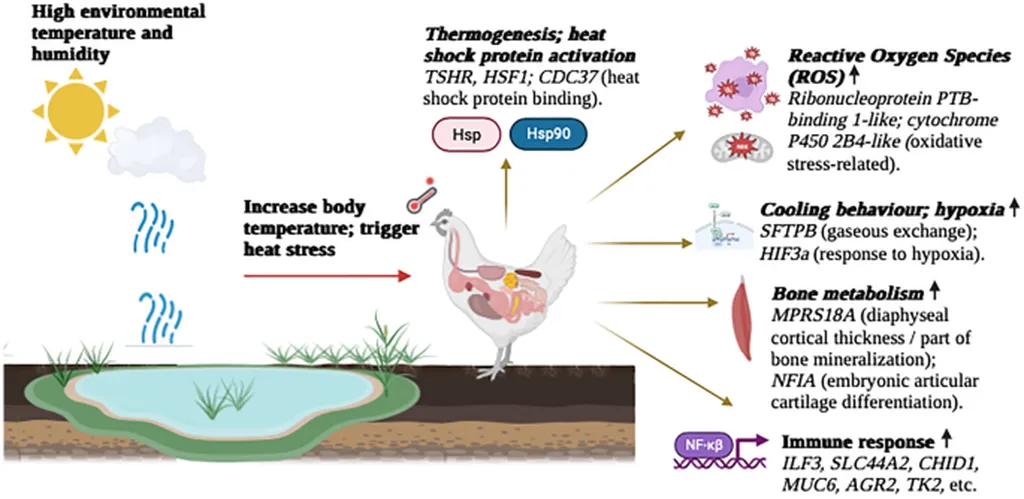In the heart of Nigeria, a groundbreaking study is unraveling the genetic tapestry of Indigenous Chickens, promising to revolutionize poultry farming and potentially reshape the agricultural landscape. Led by Shola Rasheed Amao from the Department of Agricultural Education at Emmanuel Alayande College of Education, this research is not just about chickens; it’s about the future of food security and sustainable agriculture.
Amao and his team have turned their attention to the Insulin-like Growth Factor-1 (IGF-1) gene, a promising candidate for predicting productive performance in chickens. By analyzing the genetic diversity of eight improved Nigerian Indigenous Chicken (NIC) populations, they’ve opened a window into the genetic potential of these birds. “The IGF-1 gene polymorphism is a powerful tool,” Amao explains. “It allows us to assess the production performance characteristics of these improved chickens, paving the way for targeted breeding programs.”
The study, published in ‘Животновъдни науки’ (which translates to ‘Animal Science’), reveals a moderate genetic diversity among the chicken populations, with a total of two alleles observed across all loci. The average observed and expected heterozygosity values were 0.538 and 0.466, respectively, indicating a healthy level of genetic variation. This diversity is crucial for the resilience and productivity of these chickens, offering a robust genetic foundation for future breeding programs.
One of the most compelling findings is the genetic closeness between certain chicken populations, such as RINN and RIFE, and SIFE and RINF. This information is invaluable for breeders looking to maximize productivity and sustainability. “Understanding these genetic relationships allows us to make informed decisions about crossbreeding,” Amao notes. “This can lead to improved production performance and enhanced disease resistance, ultimately benefiting farmers and consumers alike.”
The study also highlights the significant gene differentiation (FST) of 0.336 among the genotypes, suggesting a substantial genetic variation that can be harnessed for selective breeding. The negative FIT value of -0.153 indicates a high level of genetic diversity within the populations, further emphasizing the potential for genetic improvement.
The implications of this research extend far beyond the poultry farm. As the global demand for sustainable and ethically produced food continues to grow, understanding and leveraging genetic diversity becomes increasingly important. This study provides a roadmap for future research and practical applications in the field of animal genetics.
Amao’s work is a testament to the power of genetic research in driving agricultural innovation. By unlocking the genetic potential of Nigerian Indigenous Chickens, he and his team are contributing to a more sustainable and food-secure future. As the world grapples with the challenges of climate change and food security, studies like this offer hope and a path forward.
In the words of Amao, “This research is just the beginning. The IGF-1 gene is highly informative, and its potential applications in chicken populations are vast. We are excited about the possibilities and the positive impact this can have on the agricultural sector.” With such promising findings, the future of poultry farming in Nigeria and beyond looks brighter than ever.

